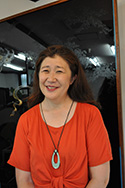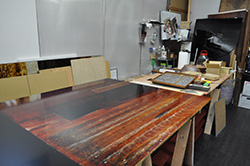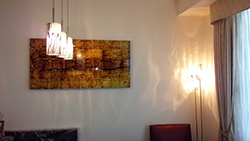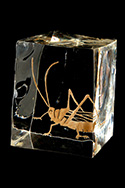Meet Japanese Companies with Quality
Discover durable and natural Japanese lacquer Duco Co., Ltd.
Website: Duco Co., Ltd.![]()
Category: Japanese Design & Daily goods
Cultural inheritance
Japanese lacquer, or urushi, has a history dating back more than 9,000 years. Most commonly used with tableware, this vegetable-based finish with antibacterial properties has also been used to coat musical instruments, jewelry and-due to its ability to prevent rust-even armor.
Growing up in Mexico, Duco Co., Ltd. Company President Kazuko Watanabe and her family carried with them their favorite Japanese items. Watanabe developed an appreciation for these useful objects. When food was scarce in those days, there would be a truck selling food once a month. On such days, Japanese cuisine would be served, the family would enjoy a meal, and of course urushi bowls were used. Using the treasured items with utmost care, the family still needed to repair them when broken and from this, Watanabe not only added to her knowledge of urushi but also learned its repair. Today, restoration is still a big part of the Duco company's business, which focuses on recreating and preserving traditional lacquer ware, as well as crafting unique pieces suitable to the modern world by finding new materials to pair with traditional urushi.

Duco President Kazuko Watanabe wearing an acrylic lacquer pendant made by her company

A glimpse of a large-scale urushi on a glass piece in progress in the atelier
Made to last
Urushi is an intensive and demanding process with more than two-dozen steps involved from raw plate to finished product. The lacquer, which is extracted from the sap of a sumac tree, is prepared by skilled craftspeople who take the raw material and filter, heat-treat, color and apply it, which is a repeated process of many layers. Once dry, the glossy and smooth lacquered surface is harder than glass, and this durability is the hallmark of urushi, and the trademark of Duco's atelier in Japan.
Traditional urushi, made correctly, are beautiful pieces that can last a lifetime. However, the time, labor and cost necessary to produce even a single sample means that demand isn't what it once was. To that end, Duco is applying lacquer in new and innovative ways, using materials that bring out the natural beauty of urushi but have a modern look and feel-such as glass, acrylic and titanium. The company's large, glass pieces are especially effective in showcasing urushi's charms when exposed to different qualities of light. These have proven popular not only domestically but also overseas in countries like China, France and Singapore. Also, not only are Duco's accessories popular, but also their unique pieces of urushi and new materials have attracted attention. These pieces have been used as wall surface interiors for villas and mansions or as interior material for shops, and have been receiving orders domestically and overseas.


The beautiful creation of glitter maki-e on glass
Evolution and communication
In urushi, there are echoes of nature, culture and history. From the natural patterns that emerge on the painted surface to the memories of ancestors that repaired legacy pieces hold, Watanabe hopes to evoke these through her art. "Even though languages are different all over the world, emotions are universal. Even without words, people can understand the heart. We hope people can understand something of our feelings and culture through these pieces."
Whether it's a classic piece decorated with maki-e (traditional technique of decoration by which gold and/or silver powder is sprinkled) or an acrylic lamp, Duco is sure to have put a lot of care into the creation.
Website: Duco Co., Ltd.![]()



